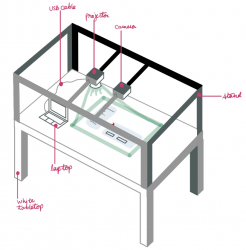What are the most significant risks that could jeopardize the success of the project? How are these risks being managed? What contingency plans are ready?
We need to improve our tap response rate. We will manage this by soldering more piezo sensors to cover a larger surface area of the poster board.
Were any changes made to the existing design of the system (requirements, block diagram, system spec, etc)? Why was this change necessary, what costs does the change incur, and how will these costs be mitigated going forward?
No system changes were made.
Provide an updated schedule if changes have occurred.
No schedule changes were made.

